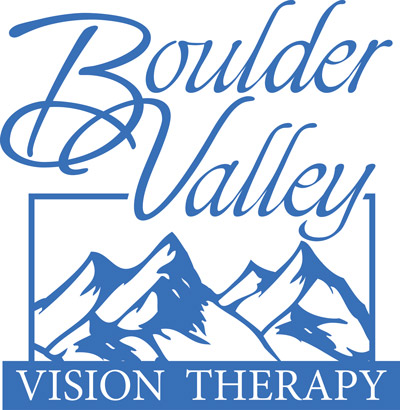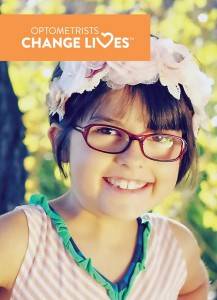Let’s Talk Toddlers: A Vision Therapist’s Guide
Speaker - Jessica Zwilling, COVT
YMCA of the Rockies, Estes Park CO
Colorado Vision Training Conference
September 16-18, 2022
Toddler Vision Development
- Arnold Gesell – Father of Child Development
“Vision is the key to a child’s whole development . . .” – Arnold Gesell, MD
Vision – Its development in Infant and Child
https://www.amazon.com/Vision-Its-Development-Infant-Child/dp/1443731722
If a child is failing out of school – “they weren’t developmentally ready in the first place”
Harm – if child is not developmentally ready, it is “Developmentally inappropriate”
- Infant Development
- How a Baby Grows
- The first five years of Live – the preschool yearsVisual Milestones
- https://www.aoa.org/healthy-eyes/eye-health-for-life/infant-vision?sso=y
- https://www.cdc.gov/ncbddd/actearly/milestones/index.html
https://www.cdc.gov/ncbddd/actearly/pdf/FULL-LIST-CDC_LTSAE-Checklists2021_Eng_FNL2_508.pdf
Preoperational stage – ages 2-7 – Kids learn through pretend play but still struggle with logic and taking into account another’s perspective (self-centered, me, mine is normal).
- Copy cat – Doing and demonstrating, they are going to want to try what they see you do.
- Walks alone and begins to run
- Kicks balls
- Imitates behaviors
- Self-aware
- Is excited about playing and having company
- Sorts colors and shapes
- Demonstrates independence
- Defiant behavior (known as the terrible twos and threes)
AGE 1
Peek-a-boo, pat-a-cake, looks at pictures, normal depth perception, “where is the duck?” – points to objects of interest. Interest in picture books.
- They won’t know objects they have no experience with.
- Find out likes/dislikes
- May hold books upside down and still be interested in looking at the book.
- Vision should be guiding motor – eyes first, body seconds, look first and then touch!
AGE 2
- Eye hand coordination, puzzles – blocks
- Depth perception – playground and curbs
- Sort color and shape.
- Fisted grip
- Scribble
- Point to objects
- Stack 4+ blocks
- Draw straight lines and circles
AGE 3
- Copy a circle
- Stack 7+ blocks
- Smooth eye movements without head movement
- Accommodates near and far easily
- Binocular coordination at near and intermediate distances (accurate convergence and divergence)
Jean Piaget: “What we see changes what we know. What we know changes what we see.”
Simply Psychology – Jean Piaget’s Theory of Cognitive Development
https://www.simplypsychology.org/piaget.html
- The child needs to move through space.
- They need to touch and move manipulatives.
REAL SPACE - CONCRETE OBJECTS
COVD JOURNAL on VISION DEVELOPMENT:
- Dr. Valenti, “Infant Vision Guidance”
o https://cdn.ymaws.com/www.covd.org/resource/resmgr/ovd37-3/147-
- Optometry and Vision Development, Vol. 37, No. 3, 2006
o https://www.covd.org/general/custom.asp?page=OVD_373
- OEP pamphlets
o https://www.oepf.org/product/help-your-baby-see-better-0
o https://www.oepf.org/product/toys-and-games-vision-development-0
o https://www.oepf.org/product/parents-guide-checklist
Toddlers want to help and we should let them:
- Learn to do actions independently
- Intrinsic reward of being a good helper
Patient Management:
- Parent involvement/behavior difference with and without parent directly involved.
- Sit on mom or dad's lap.
- Provide choices - red ball or blue ball? Not "do you want to play this game with me" - Do not give them a "no" choice.
- Never force performance: explanation of technique so parents can try at home.
- Don't schedule during nap time or meal time.
- Get on the floor.
- Play
- Sing
- Make the noise - gobble, glug, quack, etc.
Parent Compliance:
List of Games and Toys for Vision Development
2021 Holiday Toy List Toys and Games for the Holidays
- Typical treatment plan - 3 in-office VT sessions to teach HVT (4-6 weeks apart)
- Home vision therapy - 10-15 minutes, 5 days per week. 3-4 Activities.
- E-mail instructions and all correspondence
- Phone or e-mail follow-up in between sessions to "check in"
- Use materials that the family already owns or are expensive
- Sibling involvement
- Many parents make HVT the child's special mommy or daddy time which increases motivation. (*may need to be nanny, grandparent etc.)
- Progress exam with the doctor at 3-4 months.
Nursery Rhymes:
- Five Little Monkeys
- Itsy Bitsy Spider
- Twinkle Twinkle Little Star
- Mary Had a Little Lamb
- London Bridge Is Falling Down
- Hickory Dickory Dock
- Eeny, Meeny, Miny, Moe
- Baa, Baa, Black Sheep
- Alphabet Song
- The Wheels on The Bus
- https://en.wikipedia.org/wiki/List_of_nursery_rhymes
Vision therapy in the Daily routine:
- Mealtime: feeding others, scanning for snacks, snack attack
- Diaper Change: Pat-a-Cake, Visual sit-ups, angels in the snow, eye stretches
- Bath Time: chalkboard circles, bubbles play
- Bedtime: EYE MOVEMENTS Flashlight Activities CVTC 2022, eye stretches, angels in the snow, story time
Patching
o https://visionhelp.com/amblyopia-treatment-eye-patching-alone-is-no-longer-thestandard-of-care/
o https://amblyopiaproject.com/
VT Activities
- Eye Movements / VMI
- Gross motor & Bilateral Coordination
o http://visiontherapyblog.com/to-crawl-or-not-to-crawl-that-is-thequestion/
Music and Movement
Vision Training Activities
Ball roll and catch with cup – Be sure to always hold the cup with two hands. Increase the distance between players when ready to increase the challenge.
Wall Scan with pictures / family photos – Use a large area to place the pictures randomly on the wall. From a distance of 4-6 feet, ask the child to find a specific picture and then go to the wall to take it off. Increase the number of pictures and spread them out over a wider area to increase the challenge.
Feed the Puppet (spoon) / Baby (bottle) / Monster (straw) – Be sure to present the puppet in all points of gaze (up, down, left, right, center, and all the diagonals). Move the puppet to a new spot each time (saccade). You can also move the puppet in a slow continuous movement and instruct the child to watch the puppet and feed him when he stops (pursuit). Start with larger targets and, when mastered, move to smaller targets. Emphasize the temporal area of gaze (eye pointed out toward ear) to get the eye more comfortable stretching outward.
Spider Smash – Encourage the child to look and aim before stamping down on each spider. If the child misses, try again until the stamp is centered on the spider. Start with the large size and move to the smaller size when mastered.
Free Play with patching (equal time for each eye): In order for patching to be effective, it must be done with active eye-hand coordination type tasks. Passive patching, such as while watching TV, provides little benefit. You may incorporate “free play patching” as often as the child will tolerate throughout each day (up to approximately 1 hour). Be sure that there are still more hours of the day spent without the patch to encourage eye teaming. Some good free play activities to do while patching include:
• block play• puzzles• stacking toys• “driving” cars / trucks• Coloring / scribbling
- Use the eye patch for all of the above activities. Spend a little more time using the left eye versus the right eye (approx. 60% left eye / 40% right eye).
- Spend a minimum of 15 minutes total vision training time, 4 days per week.
- Rotate the activities so that you can spend equal time on each activity over the course of a week. If the child wants to do more than the minimum, there would be no harm in doing so, but would only provide more benefit.
- You can also spread out your vision training time over the course of the day, doing some in the morning and some in the afternoon.
Equipment Modifications
- Specs vs. No Specs - lens and patch options
- Show & Tell – creative solutions to using filters, lenses, and prisms
- Yoked prism
- Minus lenses in frames
- Plus lenses in frames
Accommodation
- Targets matter - touch the nose of the animal on the sticker, touch your nose.
- Near / Far
- Lenses (taped lens blanks, flippers)
MFBF
-
- Single red lens - need to see the colors of the objects with the un-occluded eye.
- Match color of bouncy ball into color of Solo cup
- Inch cubes
- Single red lens - need to see the colors of the objects with the un-occluded eye.
- MFBF activities galore
- Wall saccade search (draw pictures on index cards and tape to wall with red pencil)
- Red Maze
- Coloring with red pencil (Col-Erase brand), yellow, and pink highlighters (Sharpie brand!)
- Red ink books
- Red/Green Toybox
- Red/Black checkers Fabric Board
- Baxstrom Geometric Cards
- Carl's Cards
- Felt Boards: Red letters, Red pom poms (place on black felt background)
- Red acetate over flashlight, Press Lites
Polaroid
- One part of the Vectogram (right eye slide only for example)
Trans-lid Binocular Interactor
http://squintyjosh.blogspot.com/
Fusion
Passive vs. Active, Fleeting vs. Sustained, Observer vs. Director
- 1st degree – Simultaneous Perception
- Dissimilar objects - seen at the same time.
- 2nd degree – Flat Fusion
- Same picture combined together (some parts needed from each eye)
- 3rd degree – Stereopsis
- Combine similar pictures and 3D is seen
- Projected vectogram
- Swing Marsden ball
- Throw bean bags through the hoop (Quoits)
o Luster
-Use MIT with red/green glasses
-Large flashlight
o RG targets
Donald Getz, OD - Strabismus and Amblyopia
Special Cases
- Developmental delays
- ASD
- TBI/ABI
Additional notes from Jessica:
https://www.simplypsychology.org/piaget.htmlhttps://www.psychologytoday.com/us/blog/freedom-learn/201809/toddlers-want-help-and-we-should-let-them
https://www.ncbi.nlm.nih.gov/pmc/articles/PMC7265928/
https://pubmed.ncbi.nlm.nih.gov/29371008/
https://www.oepf.org/product/strabismus-amblyopia/
https://www.oepf.org/product/guiding-strabismus-therapy/
Jessica Zwilling, COVT
Certified Optometric Vision Therapist
O.D. Candidate, SUNY Optometry 2025
To understand vision, we must know the child; to understand the child, we must know the nature of his vision. ~Arnold Gesell












Notes:
Please contact us with any questions you might have at bouldervt@yahoo.com.